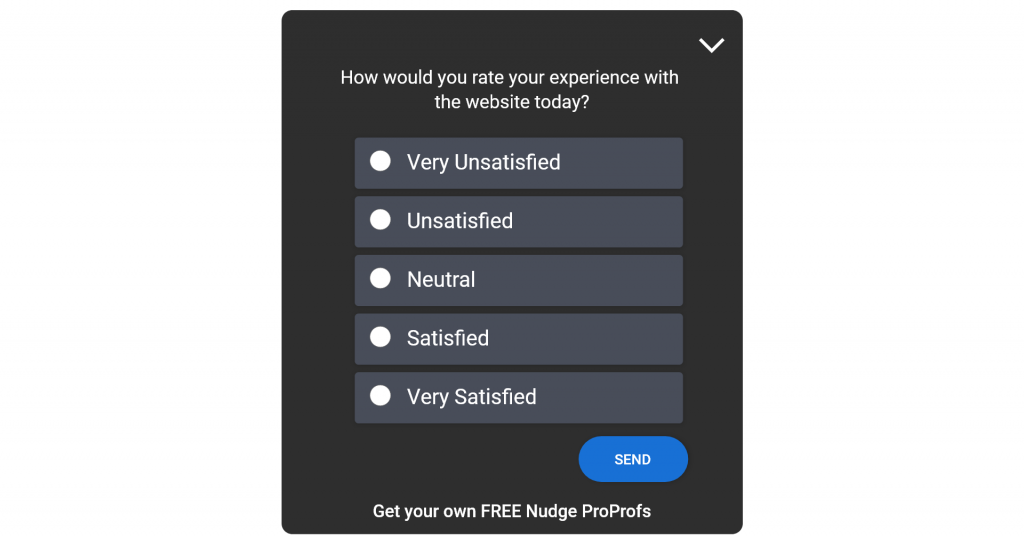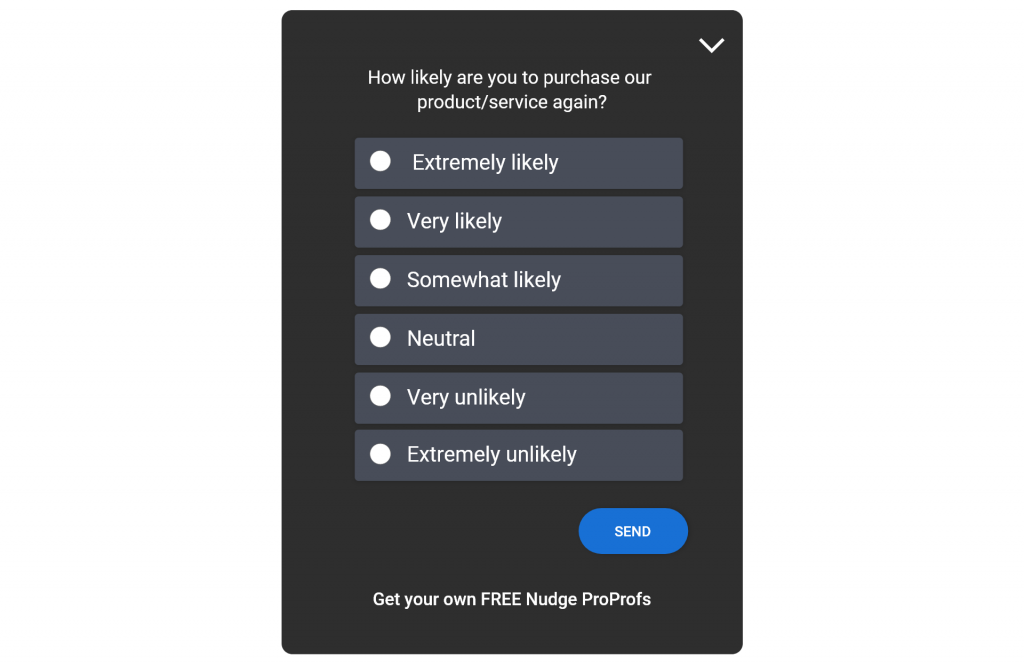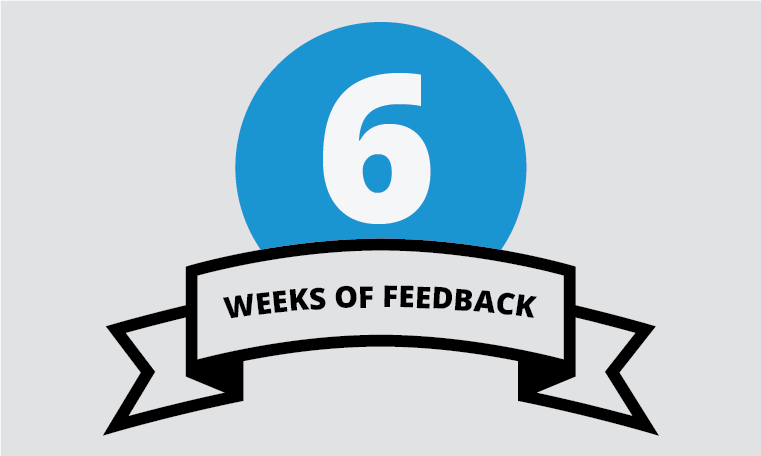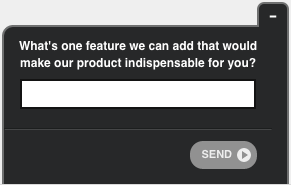
Customer research, focus groups, and market research are all valuable tools, certainly, but sometimes they feel like peering through a foggy window.
We get the broad trends, the “what,” but the deeper “why” – the real nitty-gritty of the user experience – remains frustratingly obscured.
That’s where contextual feedback shines.
Imagine not just knowing people bought your product, but understanding their exact moment of hesitation, their “aha!” moment during onboarding, or the specific feature that made them walk away. That’s what contextual customer insights give you.
So, let’s dig deeper into the value of customer feedback with context.
What Is Contextual or in-Context Feedback?
Contextual feedback, simply put, is the art of collecting responses based on specific user interactions. Unlike general customer research, it drills down into the micro-experiences of users.
For instance, imagine a user encountering a confusing checkout process on an e-commerce site. A contextual feedback survey could pop up right then, asking for thoughts on the checkout process.
Why Is Customer Research Not Good Enough?
User research and market research provide valuable insights, but they often offer a broad-stroke view.
Contextual feedback, on the other hand, goes beyond the overview. It delves into the nitty-gritty, providing nuanced and detailed insights into user experiences. While customer research might highlight that users find a website’s navigation challenging, contextual feedback could pinpoint the exact page and element causing frustration.
Popular Ways to Collect Contextual Feedback
You can collect contextual customer feedback in more ways than one. Here are some of the popular and effective methods:
Online Micro surveys
Online pop-up micro surveys aren’t intrusive pop-ups – they’re targeted conversations, like asking someone how their meal is while they’re still savoring it. And tools like Qualaroo make setting up these dynamic, advanced triggers a breeze, whether you’re on the web, mobile, or deep inside your product.
Here are different types of surveys that you can conduct:
1. Customer satisfaction surveys: After visitors have given your offerings a spin, you can check in on how satisfied they are.
Now, when it comes to new visitors, avoid hitting them with generic questions like, “How satisfied are you with our company?”
They’ve just landed, after all. But hey, don’t miss the chance to chat about your website! Keep it simple; toss out a question like:
- How would you rate your experience with the website today?

- How satisfied are you with [Product/Service Name]?

- How likely are you to purchase our product/service again?

Bonus read: 30 Best Customer Satisfaction Survey Questions to Ask
2. Net Promoter Score: Net Promoter Score (NPS) surveys are a go-to for businesses across different industries to gauge customer satisfaction. This survey is your secret weapon for uncovering just how loyal your customers are.
It’s the key to distinguishing between your biggest fans and those who might need a little extra love. And guess what? You only need to drop one question:
- How likely are you to recommend our [Product/Service] to a friend, family, or colleague?
Unlock the potential of customer feedback from NPS surveys to:
- Spot your promoters and roll out the red carpet with enticing loyalty programs.
- Enhance your customer journey by tuning into what detractors have to say.
- Fine-tune products, services, and overall business strategies to turn those neutral customers into enthusiastic advocates for your brand. It’s more than just feedback; it’s the roadmap to customer-centric success.
3. Product opportunity surveys: Who holds the key to refining your products and services? Your customers, of course! To uncover the gems of improvement, you just need to ask the right questions. Dive into the possibilities with queries like:
- Is there anything that is missing in our [tool/ product]?

- Is there anything here you never use?
4. Customer Effort Score: CES surveys help you understand how easy or difficult it is for users to perform an action on your product or website. You can ask questions like this:
Usability Testing
Put on your observing hat and watch real users interact with your creation. This live performance unveils friction points, confusing layouts, and hidden gems you might never discover otherwise.
Remember the prototype that tested beautifully in focus groups, but users stumbled through in real time? Usability testing helps prevent those costly mishaps.
One-on-One Interviews
Dive deep into individual user’s minds. Unravel their thought processes, motivations, and emotional responses to your product.
It’s like having a personalized focus group with each interview, unlocking a treasure trove of qualitative insights. Remember the seemingly minor feature that turned out to be a deal-breaker for a key customer segment? One-on-one interviews could have unearthed that gem.
Insights From the Sales Team
Your frontline troops are often privy to user feedback gold. You can tap into their daily interactions and debrief them on user pain points and praises, and you’ll be surprised at the hidden gems you uncover. Maybe that persistent support query about a hidden feature reveals a UX gap needing immediate attention.
Behavior Analysis Tools
Let the data do the talking. Heatmaps paint vivid pictures of user attention, scroll patterns, and click hotspots. Eye tracking shows where users truly focus, revealing potential blind spots in your design.
Session recordings offer a behind-the-scenes peek at user journeys, highlighting moments of frustration and delight. And tools like Qualaroo integrate seamlessly with SessionCam, letting you seamlessly layer contextual surveys onto these recorded user sessions, adding a powerful human voice to the data symphony.
How Contextual Feedback Helps You Build Better Businesses
Let’s delve into the benefits of using contextual feedback surveys and how they contribute to building better businesses:
1. Accurate Behavioural Data Collection
Contextual feedback surveys go beyond traditional methods by capturing not just what users say but also how they behave. You can use surveys to understand their preferences and why they take certain actions and integrate these insights with behavioral data using heatmaps, mouse tracking, session recordings, etc., providing a holistic view of user interactions.
This combination allows businesses to not only understand user preferences but also observe actual behaviors.
For instance, a retail website, by leveraging behavioral analysis tools, might discover that users tend to abandon their shopping carts at a specific step, leading to targeted improvements in the checkout process.
Accurate behavioral data collection enhances the depth of insights, enabling businesses to make data-driven decisions grounded in both user feedback and observed actions.
CASE STUDY: TWILIO
You can further explore how Twilio leveraged contextual insights with our Twilio case study.
2. Enhanced User Engagement
Deploying surveys at strategic moments in the user journey leads to increased customer engagement. When surveys are triggered at the right time, users are more likely to provide feedback.
For example, an e-commerce platform witnessed a 30% increase in survey responses by implementing targeted contextual surveys during the checkout process. Higher engagement rates result in a more comprehensive understanding of user preferences and pain points.
3. Timely Issue Resolution
Contextual feedback surveys empower businesses to identify and address issues promptly. By capturing feedback in real-time, organizations can respond swiftly to user concerns.
Imagine a mobile app that receives contextual feedback about navigation issues using in-app surveys; the development team can address these concerns promptly, enhancing the overall user experience and preventing potential customer dissatisfaction.
Also read: 20 Proven Tips to Improve Customer Satisfaction in 2023
4. Informed Decision-Making
Micro insights gathered through contextual feedback surveys contribute to data-driven decision-making. These surveys provide a granular understanding of user preferences, allowing businesses to tailor their products or services accordingly.
For instance, a SaaS company might refine its feature set based on specific user preferences gathered through contextual feedback. Informed decision-making ensures that businesses align their strategies with actual user needs and expectations.
CASE STUDY: HOOTSUITE

Hootsuite, drowning in low landing page conversions, dove into Qualaroo’s targeted surveys. One quick question – “Enough info?” – revealed the culprit: 65% needed more information about the services.
Armed with this real-time insight, Hootsuite transformed its page, showering visitors with details.
Resultantly, the conversions surged by 16%. This case whispers: that user-focused improvements, driven by context, unlock explosive growth. Listen intently, businesses, for the “why” behind users holds the key to unlocking the door.
6. User-Centric Product Development
Understanding user preferences and behaviors through contextual product feedback provides valuable insights for product development. Businesses can align their development roadmap with actual user needs, resulting in more user-centric products.
7. Increased Customer Loyalty
When users feel heard and see tangible improvements based on their feedback, it fosters a sense of loyalty. Contextual feedback, when used effectively, creates a two-way communication channel, demonstrating that the business values and responds to user opinions. This can lead to higher customer retention rates and positive word-of-mouth recommendations.
8. Competitive Advantage
By consistently gathering and acting on contextual feedback, businesses gain a competitive edge. Staying attuned to user preferences, fixing issues promptly, and adapting to changing market demands position a business as responsive and customer-focused. This proactive approach can set a company apart in a crowded market, attracting and retaining customers over competitors.
10. Enhanced Brand Reputation
Positive user and brand experiences, facilitated by the insights gained from contextual feedback, contribute to a positive brand reputation. Users appreciate businesses that actively seek and act on feedback, leading to a favorable perception of the brand. This positive reputation can have far-reaching effects on customer acquisition and brand loyalty.
Best Practices for Crafting Effective Contextual Feedback Surveys
If you want reliable insights, you’ll first need surveys that ask the right questions and engage respondents. Whether it’s your first time leveraging surveys or you’re an expert at that, these survey best practices will guide your survey creation so you end up with successful surveys.
1. Timed Triggers for Relevant Insights
Don’t interrupt user flow with untimely surveys. Instead, deploy them strategically at key moments when users have just completed a task, made a purchase, or interacted with a specific feature.
For example, imagine an e-learning platform gathering feedback after users finish a challenging module. This ensures the questions are directly relevant to their immediate experience, leading to more focused and valuable insights.
Also read: When is the Best Time & Day to Send a Survey?
2. Clarity is King: Crafting User-Friendly Surveys
Keep surveys concise and clear. No one enjoys deciphering cryptic questions or technical jargon. Use simple language, structure questions logically, and avoid unnecessary complexity. Here are a few examples to better understand this:
Wrong Approach:
- Jargon & Technical Terms: “How satisfied are you with the functionalities of our UX paradigm?” (Confusing technical term for most users)
- Open-ended without context: “Tell us about your recent experience.” (Lacks specificity, users might not know what to focus on)
- Double Negatives: “Would you disagree that the platform is not intuitive?” (Double negative can be confusing)
- Leading Questions: “Wouldn’t you agree that our new feature is amazing?” (Biases the answer)
Right Approach:
- Simple Language: “How easy was it to use the website features?” (Clear and understandable)
- Specific context: “How satisfied were you with the checkout process on our e-commerce platform?” (Provides context for users to think about)
- Positive phrasing: “How well did the platform meet your expectations?” (Prompts a more neutral response)
- Neutral & balanced options: “Strongly agree,” “Agree,” “Neutral,” “Disagree,” “Strongly disagree” (Allows for nuanced responses)
- Clear answer choices: “Multiple choice with short, easily understood options” (Prevents confusion)
3. A Palette of Question Types
Don’t get stuck in a question rut! Utilize a mix of question types to gather diverse data and deeper insights. Think multiple choice for quick quantitative data, open-ended questions for rich qualitative feedback, and even rating scales for gauging sentiment.
4. Analyze, Iterate, Repeat
Data alone isn’t enough. Regularly analyze your survey data to identify trends, patterns, and actionable insights. Use these insights to refine your survey questions, improve targeting, and enhance the overall survey experience.
Here’s an example:
Suppose an app creator initially launched a survey asking why users were churning. They could have settled for the vague “lack of motivation” response. But they knew they could uncover deeper insights.
By iterating on their survey, they discovered users could be more motivated by challenges that dynamically adjusted to their progress. This could have been a missed opportunity, but their willingness to analyze and refine their approach led to a solution that could significantly reduce churn rates.
5. Laser-Sharp Targeting for High-Quality Insights
Don’t settle for random feedback. Online survey tools like Qualaroo offer advanced targeting options, allowing you to trigger surveys based on user behavior or specific events to ask visitors questions related to where they are on the website and in the process.
The advanced targeting feature also comes with conditional logic with which you can make questions skippable and ask questions related to their previous responses. For example, you can create custom survey paths so you only ask relevant questions to the right people and collect precise insights.
This is how branching logic works:
This precision-guided approach ensures you receive relevant feedback from the right users, maximizing the quality and value of your insights. Imagine a clothing store deploying a survey about a new product line only to customers who recently purchased similar items.
6. Mobile-First Design in a Mobile-Centric World
With smartphones glued to hands, mobile-friendliness is no longer optional. Design in-app mobile surveys with bite-sized questions, easy navigation, and a responsive layout that shines on any screen.
For example, think of a news app serving up a streamlined, mobile-optimized survey instead of a desktop behemoth on tiny phone screens. Mobile responsiveness boosts engagement and completion rates, especially for businesses with mobile apps or a significant mobile web presence.
7. Goal-Aligned Questions for Strategic Growth
Align your survey questions with your specific business objectives. Want to increase user retention on your subscription service? Ask questions that delve into the factors influencing user loyalty and churn.
This targeted approach provides laser-focused insights that fuel strategic decisions and drive business growth. Imagine a video streaming platform crafting questions around viewing habits and content preferences to understand what keeps users engaged and subscribed.
8. Bite-Sized Surveys to Combat Fatigue
You dont want respondents to abandon your surveys due to survey fatigue, right? So, to avoid this, keep your surveys brief and avoid marathon questionnaires.
Test different lengths and find the sweet spot where users are happy to answer without feeling drained.
9. Connect With Customers Emotionally
Beyond data, understanding customer emotions is the secret sauce to exceptional experiences. Qualaroo’s sentiment analysis cracks the code, revealing joy, frustration, and even hidden annoyance in user feedback.
This emotional intelligence lets you:
- Spot simmering frustrations: Neutral responses might mask simmering anger, prompting you to fix issues before they explode.
- Personalize experiences: Imagine offering support based on a user’s emotional state – a helpful guide for the flustered, a special offer for the delighted.
- Build genuine connections: Tailoring gestures to emotions, like a heartfelt apology after a mishap, fosters loyalty and keeps customers coming back.
By diving deeper than data, you forge a connection with your audience on an emotional level – and that’s where truly remarkable experiences are born.
Contextual Insights For The Win
The pivot from generalized feedback to nuanced contextual insights can significantly transform your customer experience and satisfaction.
Contextual insights, rooted in specific user interactions, unveil the intricacies often overlooked by traditional surveys. Contextual surveys, the vital bridge translating these insights into action, capture real-time feedback dynamically.
This evolution ensures accurate data collection, fostering improved customer satisfaction, user-centric product development, and heightened customer loyalty. Crafting effective surveys becomes strategic, weaving a narrative aligned with user needs.
So, if you want to leverage the synergy between contextual insights and surveys for your business, go with a tool that makes it easy to do so.
FREE. All Features. FOREVER!
Try our Forever FREE account with all premium features!





